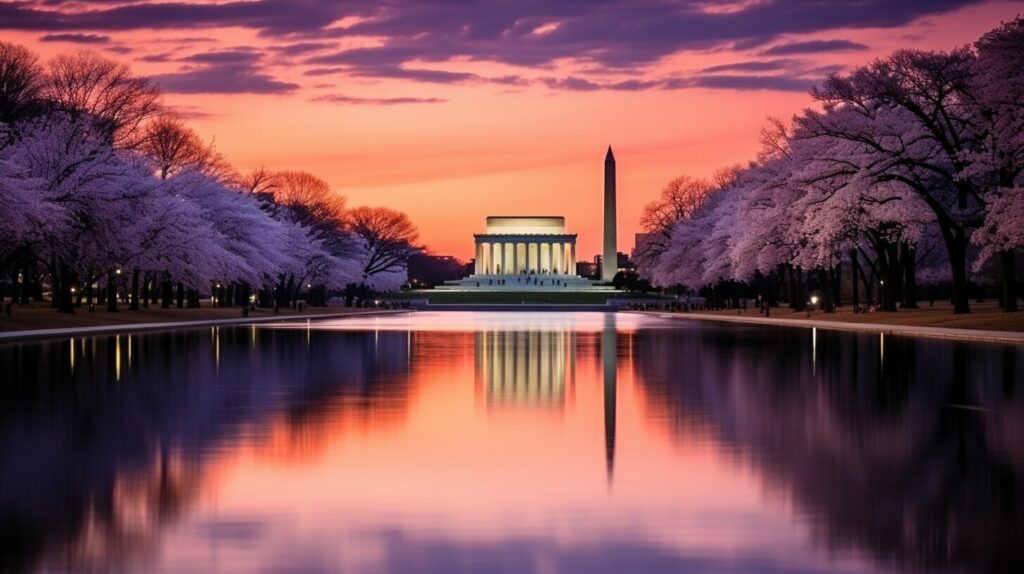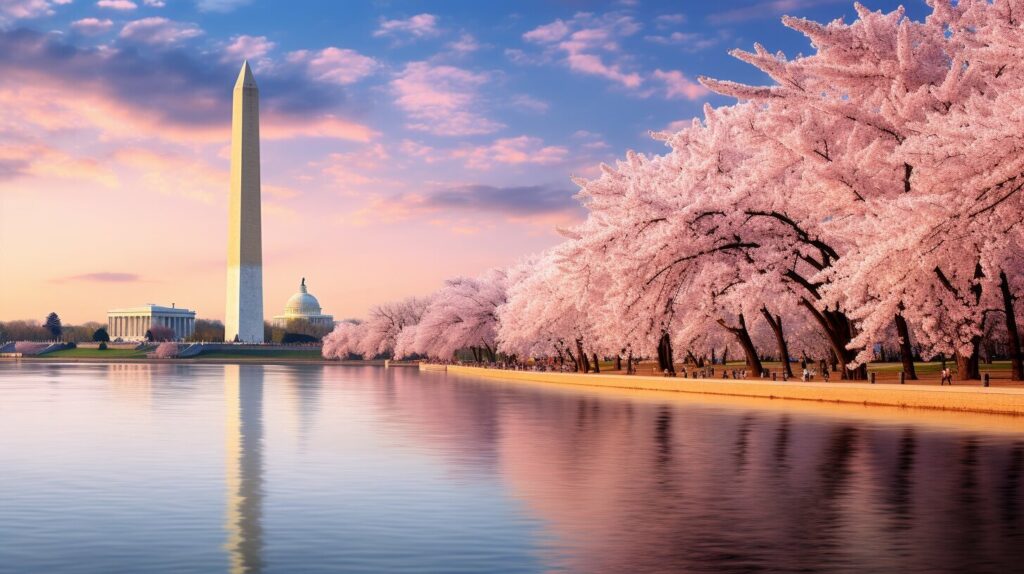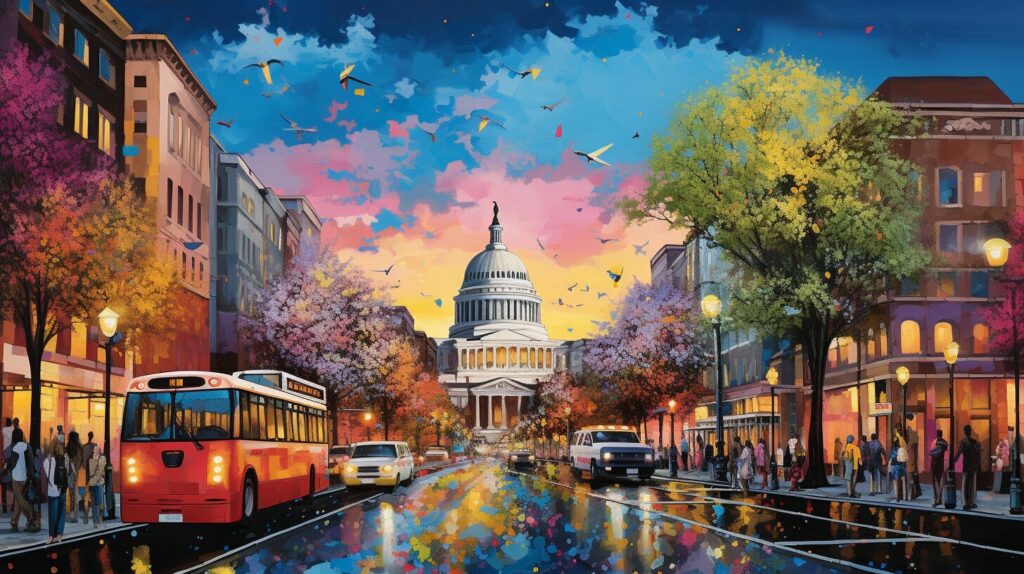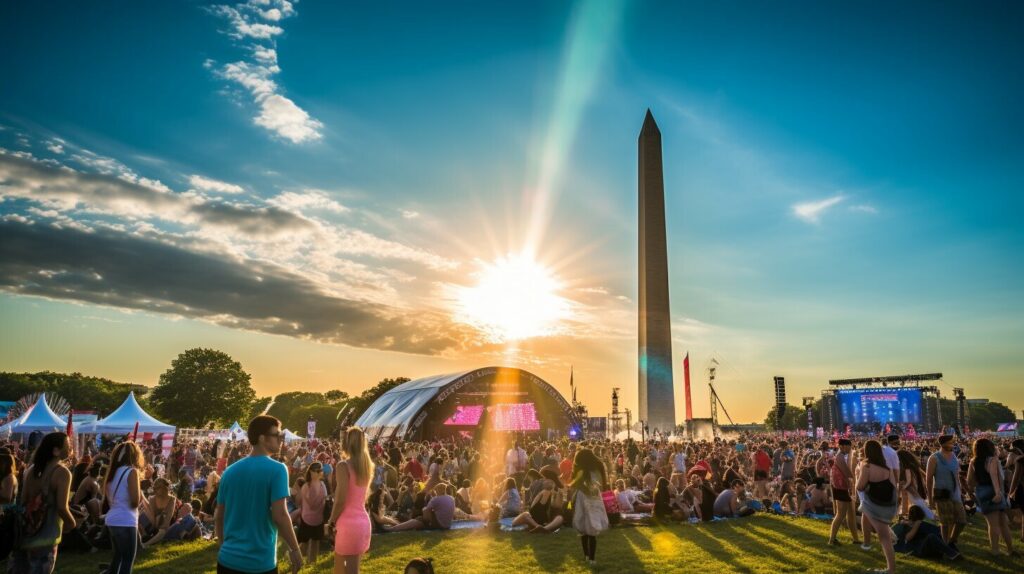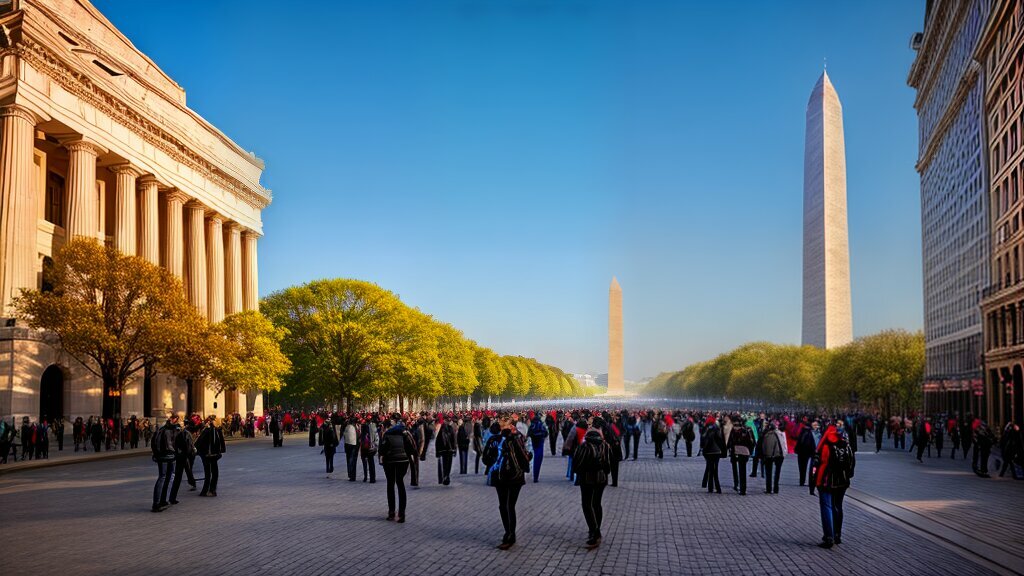Welcome to Washington, D.C., the capital of the United States! Whether you’re a history buff, art enthusiast, or simply love to explore, this vibrant city has something for everyone. From iconic landmarks to world-renowned museums, there are countless places to visit in Washington, D.C. that should be on your must-see list.
Key Takeaways:
- Washington, D.C. is the capital of the United States
- There are many places to visit in Washington, D.C.
- The city has a rich history and cultural significance
The National Mall and Memorial Parks
One of the most iconic places to visit in Washington, D.C. is the National Mall, which spans over two miles and is home to several memorials that honor key figures and events in American history. The National Mall is not only a symbol of national pride but also serves as a popular gathering spot for political rallies and public events.
The Memorials
Within the National Mall, there are several memorials that visitors can pay their respects to. The Lincoln Memorial, for example, is a towering monument that features an impressive sculpture of President Abraham Lincoln. Visitors can climb the marble steps to reach the large chamber inside the memorial, where they can see inscriptions of Lincoln’s famous speeches and a stunning view of the National Mall.
Another popular memorial is the Martin Luther King Jr. Memorial, which celebrates the civil rights leader’s life and accomplishments. The memorial features a towering statue of Dr. King and several inscriptions of his most famous quotes.
The World War II Memorial is also located within the National Mall and honors the contributions of American soldiers during the war. The memorial is a beautiful tribute to the veterans who served and features several bronze sculptures and various inscriptions.
The Parks
In addition to the memorials, the National Mall is also home to several parks that offer stunning views of the surrounding monuments. Constitution Gardens, for example, is a peaceful oasis nestled between the Lincoln Memorial and the Vietnam Veterans Memorial. The park features a tranquil pond, walking paths, and plenty of benches for visitors to relax on.
Another popular park is the West Potomac Park, which offers stunning views of the Tidal Basin, the Potomac River, and the Washington Monument. The park is a great place for a picnic or a leisurely stroll, and visitors can often see locals jogging or playing frisbee.
Overall, the National Mall and Memorial Parks are must-see attractions for anyone visiting Washington, D.C. Whether you’re interested in history, culture, or simply want to take a peaceful walk, there is something for everyone to enjoy.
The Smithsonian Institution
Founded in 1846, the Smithsonian Institution is the world’s largest museum, education, and research complex, consisting of 19 museums, galleries, and zoological parks. The Smithsonian is a significant cultural institution, showcasing collections of art, history, culture, and science. Each museum represents a unique facet of the Smithsonian’s diverse offerings.
The National Museum of American History
The National Museum of American History is dedicated to exploring the richness and diversity of American history. The museum showcases several global iconic artifacts, such as the Star-Spangled Banner, the First Ladies’ Inaugural Gowns, and the Greensboro Lunch Counter.
The National Air and Space Museum
The National Air and Space Museum is the world’s most extensive aviation and space museum, featuring over 60,000 artifacts of aviation and space exploration, including the original Wright brothers’ 1903 flyer, the Apollo 11 command module, and the Hubble Space Telescope. The museum has two facilities, one located on the National Mall and the other situated in Virginia’s Udvar-Hazy Center.
The National Museum of Natural History
The National Museum of Natural History is dedicated to understanding the natural world’s past, present, and future. The museum features a vast and diverse collection of specimens, such as the Hope Diamond, the world’s largest blue whale exhibit, and prehistoric dinosaur fossils. The museum also houses the Baird Auditorium, offering lectures, films, and presentations on topics such as science, culture, and environment.
Visiting the Smithsonian museums is free of charge, but it’s recommended to book timed-entry passes in advance due to their popularity. Plan your trip to explore the Smithsonian’s rich and diverse offerings and gain a deeper appreciation of culture, history, and science.
The U.S. Capitol
The U.S. Capitol, located in Capitol Hill, is one of the most recognizable buildings in Washington, D.C. and serves as the seat of the legislative branch of the U.S. government.
The neoclassical architecture of the Capitol building is striking, and the iconic dome can be seen from various parts of the city. Visitors can take a tour of the Capitol and explore its historical significance, including the Rotunda and the Statuary Hall.
Throughout the Capitol’s history, it has been the site of several important political events and speeches, including the presidential inauguration and the State of the Union Address. It has also survived numerous attempts at destruction, including the burning of the Capitol and the attempted assassination of lawmakers.
The Architecture of the U.S. Capitol
The U.S. Capitol building was designed by architect William Thornton and is an excellent example of neoclassical architecture. The building is made of white marble quarried from Virginia, and the dome stands at 288 feet tall.
The east and west fronts of the building are adorned with columns, arches, and pediments, and the building’s overall symmetry is a nod to the classical styles of ancient Greece and Rome.
Inside the Capitol, visitors can admire the frescoed ceiling of the Rotunda, which features the “Apotheosis of Washington” painting. The painting depicts George Washington ascending to the heavens and being welcomed by various mythical figures.
The Statuary Hall, also located inside the Capitol, features bronze and marble statues of notable Americans, including Rosa Parks, Helen Keller, and Thomas Edison.
The White House
The White House is the official residence of the President of the United States and one of the most recognizable buildings in the world. Since its construction in 1792, the White House has served as a symbol of American democracy and a witness to the country’s history.
Visitors can take a tour of the White House, but reservations must be made in advance through a member of Congress. The tour includes the East Wing, the State Dining Room, the China Room, and the Blue Room, among other areas of the building. The tour ends with a walk through the White House Kitchen Garden, created by First Lady Michelle Obama in 2009.
The White House has undergone numerous renovations and additions over the years, including the West Wing, which houses the offices of the President and the Vice President. The Oval Office, where the President conducts business, is located in the West Wing.
“Let every nation know, whether it wishes us well or ill, that we shall pay any price, bear any burden, meet any hardship, support any friend, oppose any foe to assure the survival and the success of liberty.”
— President John F. Kennedy, Inaugural Address, January 20, 1961
The White House has also been the site of many historic events, from Presidential inaugurations to state dinners and diplomatic meetings. The building has seen its share of tragedy as well, including the assassination of President John F. Kennedy in 1963.
Today, the White House remains a symbol of American democracy and an iconic landmark in Washington, D.C.
The Lincoln Memorial
The Lincoln Memorial is one of the most iconic and recognizable landmarks in Washington, D.C. It’s a tribute to the life and legacy of the United States’ 16th president, Abraham Lincoln. The memorial is located on the western end of the National Mall and has attracted millions of visitors since its opening in 1922.
The Lincoln Memorial’s design is inspired by ancient Greek temples, characterized by massive columns and a large seated statue of Abraham Lincoln. The statue itself is 19-feet tall and made from 28 blocks of white marble. It’s an awe-inspiring sight and a must-see attraction when visiting Washington, D.C.
The Design and Architecture
The Lincoln Memorial’s design is credited to Henry Bacon, an American architect, who drew inspiration from the Parthenon, a temple in Athens, Greece. The temple’s pillars, carved details, and overall symmetry have influenced the Lincoln Memorial’s aesthetic and design. The building is constructed from marble quarried in Colorado and Tennessee and has a footprint of 60 by 190 feet.
The interior of the Lincoln Memorial is equally impressive, with 36 Doric columns, each measuring 44 feet tall, encircling the statue of Abraham Lincoln. The walls of the memorial are inscribed with two of Lincoln’s most famous speeches, The Gettysburg Address and his Second Inaugural Address.
Abraham Lincoln Statue
The statue of Abraham Lincoln is the centerpiece of the Lincoln Memorial. The statue is carved from white Georgia marble and weighs 175 tons. It depicts Lincoln seated, with one hand resting on an armrest and the other held upright. The statue’s facial features are striking, and visitors often spend hours studying the details of Lincoln’s face and hands.
“In this temple, as in the hearts of the people for whom he saved the Union, the memory of Abraham Lincoln is enshrined forever.”
This famous quote, by the memorial’s designer Henry Bacon, is inscribed above the statue in large letters. The quote captures the essence of the Lincoln Memorial and its role as a permanent reminder of Lincoln’s life and achievements.
The Washington Monument
The Washington Monument is one of the most iconic landmarks in Washington, D.C. Standing proudly at a height of 555 feet, the monument is an impressive feat of engineering and design. The monument was built to honor the first President of the United States, George Washington, and has become a symbol of national pride and patriotism.
| Construction of the Monument | Interesting Facts |
|---|---|
| The Washington Monument was built in two phases, with construction beginning in 1848 and not being completed until 1884 due to lack of funding during the Civil War. | The monument is made of marble, granite, and sandstone and has 50 flags representing each state in the U.S. around its base. |
| The monument has an elevator that takes visitors to the top, where they can enjoy stunning views of the surrounding city. | The monument is actually an obelisk, a tall, four-sided, narrow tapering monument that ends in a pyramid-like shape at the top. |
The Washington Monument is not only a beautiful sight to behold, but it also holds significant historical value. It serves as a reminder of our country’s founding and the ideals that our nation was built upon. Visitors to Washington, D.C. should not miss the opportunity to see this remarkable monument in person and experience the sense of national pride that it inspires.
The National Gallery of Art
If you’re a lover of art, the National Gallery of Art should definitely be on your list of places to visit in Washington, D.C. This museum boasts an extensive collection of artwork from a variety of styles and time periods, including many famous pieces.
| What to See | Description |
|---|---|
| The West Building | This building houses the gallery’s earlier collections, including medieval and Renaissance art, as well as works by famous painters such as Leonardo da Vinci and Rembrandt. |
| The East Building | Added in 1978, this building contains more modern and contemporary pieces, including works by artists such as Jackson Pollock and Andy Warhol. The building itself is also a work of art, designed by architect I.M. Pei. |
One of the highlights of the National Gallery of Art is the sculpture garden, which features works by artists such as Alexander Calder and Roy Lichtenstein. It’s a beautiful place to stroll and relax after exploring the museum.
Admission to the National Gallery of Art is free, making it a popular spot for tourists and locals alike. There are also frequent special exhibits and events, so be sure to check the museum’s website for more information.
Georgetown
If you’re looking for a change of scenery in Washington, D.C., then you might want to consider visiting the historic neighborhood of Georgetown. Cobblestone streets, charming townhouses, and notable landmarks make it a must-see for any tourist.
One of the most iconic landmarks in Georgetown is the C&O Canal. It stretches from Georgetown to Cumberland, Maryland, and was once a vital transportation route for goods and supplies. Nowadays, the canal and its towpath are perfect for a leisurely stroll or bike ride.
If you enjoy shopping, then head over to M Street and Wisconsin Avenue. There are plenty of boutiques, national retail stores, and restaurants to keep you busy for a while. Don’t forget to stop by Georgetown Cupcake, which was made famous by the reality TV show “DC Cupcakes.”
For history buffs, visit the Old Stone House. It’s the oldest standing building in Washington, D.C., and provides a glimpse into what life was like in colonial times. The house is open for tours and hosts reenactments during special events.
Finally, end your day in Georgetown by taking a scenic walk along the Potomac River. The Waterfront Park offers stunning views of the Kennedy Center, the Washington Monument, and the Key Bridge.
The Smithsonian National Zoo
The Smithsonian National Zoo is a premier destination for animal lovers visiting Washington, D.C. With over 2,700 animals representing more than 390 species, the zoo offers visitors a chance to see rare and endangered animals up close and personal.
The zoo is home to several popular animal exhibits, including the giant pandas, elephants, big cats, and the American Trail featuring sea lions and seals. Visitors can also catch a glimpse of animals from around the world, such as the cheetahs, gorillas, and red pandas.
| Exhibit | Description |
|---|---|
| Giant Pandas | The Giant Panda exhibit is one of the most popular at the National Zoo, featuring Mei Xiang, Tian Tian, and their offspring. |
| The American Trail | A showcase of North American species, including sea lions, seals, bald eagles, and gray wolves. |
| Great Cats | Indoor and outdoor exhibits featuring African lions, Sumatran tigers, and Amur leopards. |
Aside from the animals, the zoo also has several activities and attractions for guests of all ages. The daily animal demonstrations and keeper talks provide insight into the animals’ behaviors and habitats, while the zoo’s special events like Boo at the Zoo and ZooLights offer a unique experience.
The National Zoo is open 364 days a year, with free admission. However, parking and some attractions may require a fee. Visitors are encouraged to check the zoo’s website for the latest information on hours, events, and animal sightings.
The Conclusion
Washington, D.C. is a city filled with history, culture, and unique experiences. From the iconic National Mall and Memorial Parks to the charming streets of Georgetown, there are countless must-see attractions to explore.
Whether you’re a history buff, art lover, or simply looking for a fun getaway, Washington, D.C. has something for everyone. Make sure to add these top attractions to your travel guide and create unforgettable memories.
So what are you waiting for? Plan your next trip to Washington, D.C. and discover the beauty and charm of this amazing city.
FAQ
Q: What are the must-see attractions in Washington, D.C.?
A: The top places to visit in Washington, D.C. include the National Mall and Memorial Parks, the Smithsonian Institution, the U.S. Capitol, the White House, the Lincoln Memorial, the Washington Monument, the National Gallery of Art, Georgetown, and the Smithsonian National Zoo.
Q: What can I see at the National Mall and Memorial Parks?
A: The National Mall features iconic memorials such as the Lincoln Memorial and the Washington Monument, as well as various other memorials honoring important figures and events in American history.
Q: What is the Smithsonian Institution?
A: The Smithsonian Institution is a renowned organization that includes multiple world-class museums spanning various disciplines, offering visitors a unique cultural and educational experience.
Q: What can I explore at the U.S. Capitol?
A: The U.S. Capitol is the seat of the United States Congress and offers visitors the opportunity to see its impressive architecture, learn about the legislative process, and explore its historical significance.
Q: What is the significance of the White House?
A: The White House is the official residence and workplace of the President of the United States. It holds historical importance and provides a glimpse into the country’s political history.
Q: What can I discover at the Lincoln Memorial?
A: The Lincoln Memorial is a famous monument dedicated to the 16th President of the United States, Abraham Lincoln. It showcases a stunning design and reflects his enduring legacy.
Q: What does the Washington Monument symbolize?
A: The Washington Monument is a towering obelisk that serves as an iconic symbol of the United States and commemorates George Washington, the first President of the country.
Q: What can I see at the National Gallery of Art?
A: The National Gallery of Art houses an extensive collection of art, ranging from classical masterpieces to contemporary works, making it a must-visit destination for art enthusiasts.
Q: What makes Georgetown a notable neighborhood?
A: Georgetown is a historic neighborhood known for its charming streets, picturesque waterfront, and notable landmarks, including historic houses, shops, and dining options.
Q: What can I experience at the Smithsonian National Zoo?
A: The Smithsonian National Zoo is home to a wide variety of animal exhibits, allowing visitors to learn about and observe various species while supporting conservation efforts.
